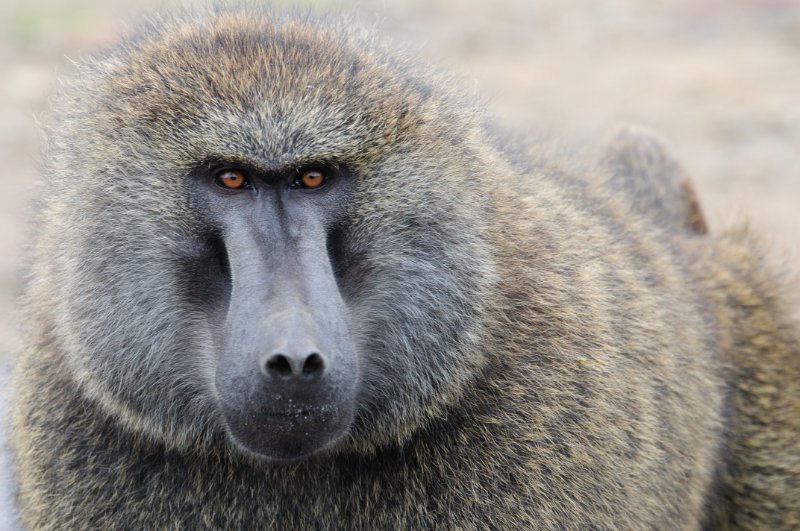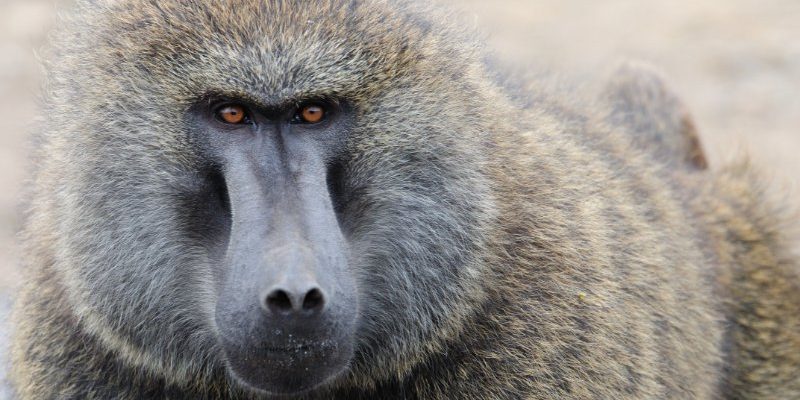
Baboons are primarily found in Africa and parts of the Arabian Peninsula, roaming the savannas, woodlands, and hills. They’re known for their distinctive features—like their long snouts, impressive canine teeth, and expressive faces—which can convey a wide range of emotions. So, let’s dive into the top ten fascinating facts about these incredible creatures that might just change how you view them.
1. Baboons Are Highly Social Animals
You might be wondering what makes baboons stand out in the animal kingdom. One of their most impressive traits is their social structure. Baboons live in large groups called troops, which can number anywhere from a few dozen to over a hundred members. This social life is packed with rules and hierarchies.
Each troop has its own leader, often a dominant male, who keeps the peace and ensures everyone knows their place. It’s like a big family reunion, where everyone has a role to play. From grooming each other to sharing food, these interactions help strengthen their bonds. Honestly, watching a troop of baboons interact is like observing a soap opera, complete with drama, affection, and conflict resolution.
Additionally, baboons communicate in various ways, using facial expressions, vocalizations, and even body language. This complex language helps them navigate their social landscape, making them one of the most communicative primates.
2. They Have a Unique Hierarchical Structure
Baboons have a fascinating social order that’s all about hierarchy. The male baboons typically hold the top positions, but it’s not just a free-for-all. The dominant males have to work hard to maintain their status, which includes defending their troop from rival males and engaging in displays of strength.
Females, on the other hand, often have the upper hand when it comes to social stability. They tend to stay within the same troop for their entire lives, forming strong bonds with other females. This creates a network of support that can be crucial during times of stress. If you’re picturing a drama-filled royal court, you’re not too far off!
This hierarchy also affects breeding. The highest-ranking males get the first pick of mates, which ensures that their genes are more likely to be passed down. It’s nature’s way of selecting the fittest, but it also leads to interesting social dynamics that can change over time.
3. Baboons Are Omnivorous
When it comes to their diet, baboons are true omnivores, and they have quite the menu. They eat everything from fruits, seeds, and grasses to insects and small animals. If you’re ever in the African savanna, you might catch a group of baboons foraging for food. It’s like a picnic, but with a lot more variety!
Their foraging behavior is also quite strategic. Baboons often travel long distances in search of food, and they can adapt their diets based on what’s available. For example, during the dry season, they might dig for roots or eat tough grasses when their favorite fruits aren’t around. This adaptability helps them survive in diverse habitats.
Plus, their foraging habits play an essential role in their ecosystem. By feeding on fruits and seeds, they help disperse seeds throughout their territory. It’s a perfect example of how interconnected nature is!
4. Baboons Have Impressive Intelligence
You may not think of baboons as scholars, but these primates are incredibly intelligent. They can solve problems and use tools, much like our more famous relatives, the chimpanzees. For instance, baboons have been known to use sticks to dig for insects or even crack open hard-shelled nuts.
This intelligence isn’t just for show; it plays a crucial role in their survival. Baboons learn from one another, passing down knowledge about food sources, safety, and social behaviors. Their ability to adapt to changing environments showcases a level of intelligence that’s impressive for non-human animals.
Interestingly, researchers have found that baboons can also remember complex social relationships within their troops. This means they can recall who’s friends with whom and keep track of various interactions—essentially navigating their social network like pros!
5. They Have a Unique Way of Communicating
Baboons might not speak our language, but they have an extensive vocabulary of sounds and gestures. From loud barks and grunts to softer coos and screams, their vocalizations reflect a variety of emotions and situations. When one baboon spots a predator, for instance, they might issue a specific alarm call that sends the troop scrambling to safety.
Body language plays a big role in communication too. A baboon might bare its teeth as a warning or present its rear as a sign of submission. Honestly, they’re like furry little diplomats, using a mix of vocalizations and movements to express everything from anger to affection.
This sophisticated communication helps reinforce social bonds and coordinate group movements—essential for a species that thrives on cooperation. Just imagine how chaotic a troop would be without this form of communication!
6. Baboons Are Threatened by Habitat Loss
As fascinating as baboons are, they face serious threats due to habitat loss. Urbanization, agriculture, and deforestation have dramatically reduced their natural habitats. This makes it harder for them to find food and shelter, putting pressure on their populations.
In some areas, baboons come into conflict with humans, often raiding crops or scavenging in trash. This kind of behavior might seem troublesome, but it’s a response to their shrinking environments. When natural resources dwindle, animals adapt—but sometimes at a cost to their safety.
Conservation efforts are in place to protect baboons and their habitats. Preserving natural areas and finding ways to coexist with these intelligent primates is crucial. After all, every step we take to safeguard their environment is a step toward maintaining biodiversity.
7. They Exhibit Unique Social Behaviors
Social behaviors in baboons are not just about hierarchy; they’re rich with nuance and variety. Grooming is a critical aspect of their social lives. It’s not just about hygiene; grooming builds friendships and fosters trust among troop members. Think of it as a group spa day, where everyone gets a little TLC.
You might also notice how baboons play with one another. Juvenile baboons engage in rough-and-tumble play, which helps them develop their social skills and learn about boundaries. This playful behavior is vital for their growth and serves to keep the troop dynamic lively.
Even in stressful situations, such as when confronting a rival troop, baboons exhibit unique social strategies. They often band together, using their numbers to avert potential threats, which speaks to their deeply ingrained instinct for cooperation.
8. Their Adaptability Is Key to Survival
Baboons are champions of adaptability. They thrive in various environments, from arid deserts to lush forests. This adaptability allows them to take advantage of different food sources and living conditions.
For instance, some baboon species, like the olive baboon, have adapted to living near human settlements. While this may seem risky, they often benefit from the scraps provided by humans. This ability to adjust their behavior based on their surroundings is what helps them endure in the wild.
Moreover, their social structures allow them to be flexible in times of crisis. When food is scarce, they can shift their foraging strategies and work together to find new resources. Essentially, adaptability is their secret weapon in the survival game.
9. Baboons Have a Rich History
Baboons have been present on Earth for millions of years, and their history is as fascinating as their behavior. They belong to the family Cercopithecidae, which means they are part of the Old World monkeys. The species we recognize today evolved to fit into various ecosystems and have a history intertwined with that of early humans.
Historically, baboons have held cultural significance in many societies. They’ve appeared in art, mythology, and even religious texts across different cultures. In ancient Egypt, for instance, baboons were linked to the god Thoth, representing wisdom and knowledge.
This rich history reflects the deep connection between humans and these primates, showcasing how their existence has been appreciated through time.
10. They Can Live a Long Time
Lastly, if you’re curious about their lifespan, baboons can live quite a long time, especially in captivity. While wild baboons typically live around 20 to 30 years, those in zoos or protected environments may reach up to 45 years!
Factors influencing their longevity include diet, habitat, and social structure. In the wild, predators and environmental challenges take a toll, but in protected environments, they are free to thrive without the same threats.
This longevity allows us to continue studying their behaviors and interactions, providing insights into their complex lives. It’s a reminder of the importance of conservation efforts, ensuring these remarkable creatures continue to thrive for generations to come.
In summary, baboons are not just fascinating animals; they are an integral part of the ecosystems they inhabit. Their complex social structures, impressive adaptability, and rich history make them worth learning about. The next time you think of these remarkable primates, remember the numerous layers that make them so unique and deserving of our attention and protection.

